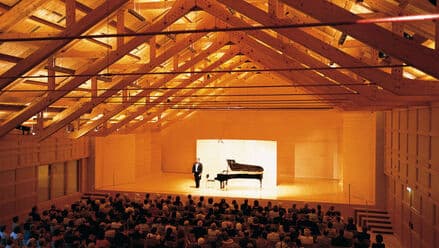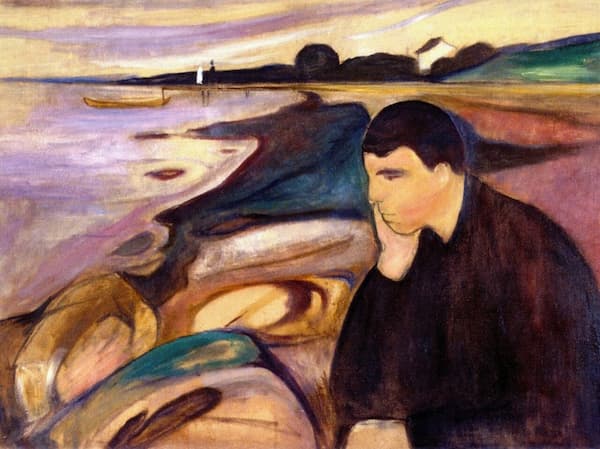Famous for his pastel drawings and oil paintings, Edgar Degas, born on 19 July 1834 in Paris, held a lifelong fascination and passion for music. And while he was not a musician, he did come from a family with a strong appreciation for musical performance. His father Auguste de Gas hosted weekly music salons at which amateurs and professionals alike sang and played instruments, and Edgar much enjoyed the music of Gluck, Weber, Verdi and Gounod while at the same time loathing the music of Wagner.
Charles Gounod: Faust, “Walpurgis Night”
Passion for Opera

Edgar Degas: Self Portrait
Degas had a burning passion for opera, and particularly the extravagant spectacles known as “grand opera.” Grand operas filled the stage with large choruses, numerous soloists, and troupes of spritely dancers accompanied by a full orchestra. Sets and costumes were lavish as designers attempted to capture the medieval and Renaissance subjects favoured by grand opera. Not only did Degas adore the music, but the backstage traffic offered an intriguing sub-plot, with young and graceful women bustling to and from their dressing rooms while men of wealth and power loitered in the wings, watching them.
A critic writes, “Degas slyly observes the voyeurism of these male protectors without being guilty of it himself. His absorption in the dancers’ activity remains emotionally detached. Nor can any trace of sentimentality be found in the vast body of his work that shows them training, rehearsing, waiting and performing; these are working women and Degas does not spare us the drudgery and hard grind that makes up their unglamorous existence.”
Giacomo Meyerbeer: L’Africaine, (excerpt)
Behind the Scenes

Edgar Degas: The Song Rehearsal
Degas was freely moving behind the scenes at the Opéra as many of the musicians in the orchestra were friends, and some attended the regular musical evenings organised by Degas’s father while he was still living. At the house of Ludovic Halévy, a close friend from schooldays, Degas himself would sometimes join in singing ensemble numbers from Gluck’s operas. As a season ticket holder at the Opéra, he listened to works by composers in his own music circle, such as Charles Gounod and Ernest Reyer, as well as operas in the grand style of the like of Meyerbeer, Donizetti, Rossini, and Verdi.
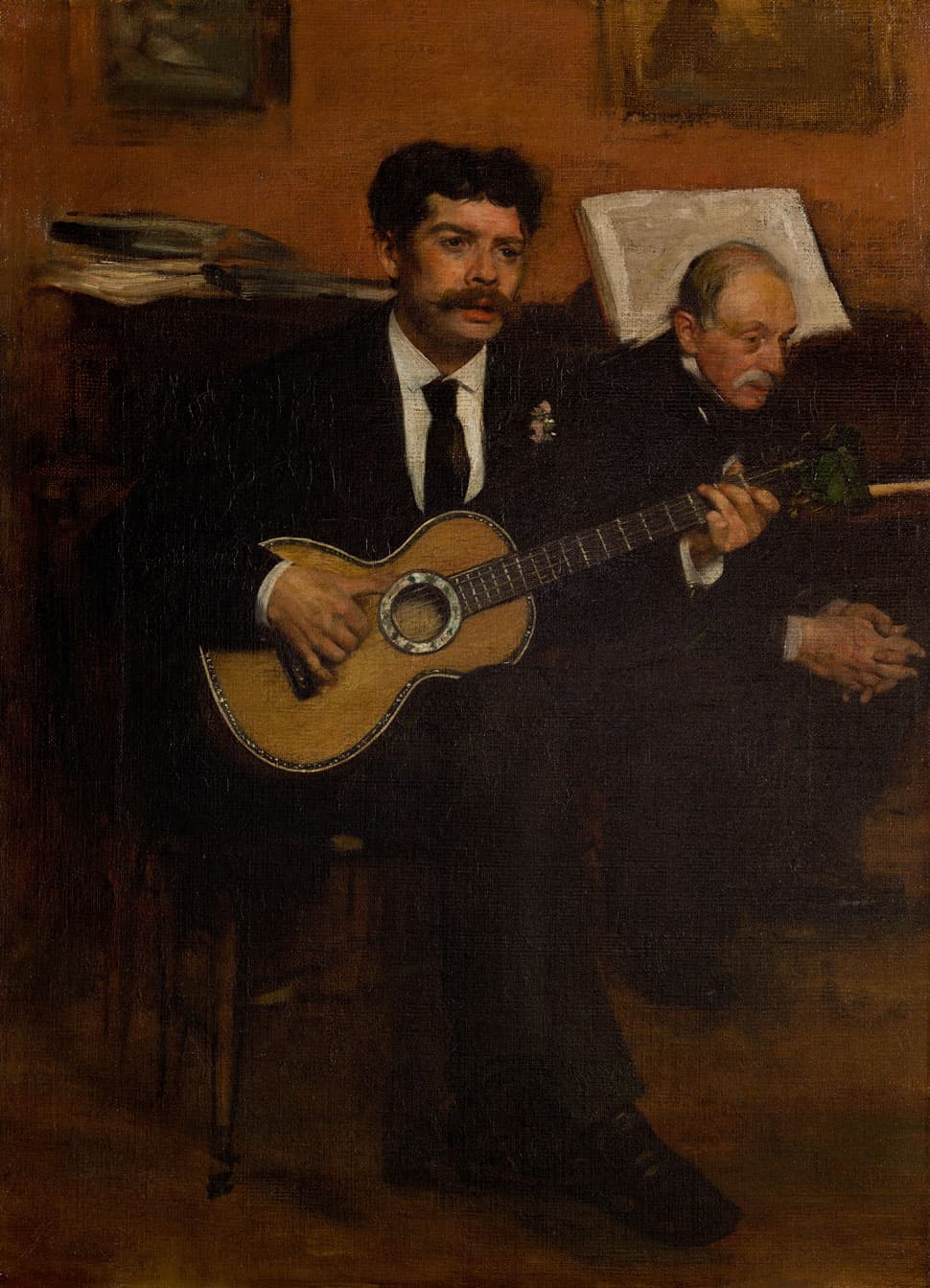
Edgar Degas:
Lorenzo Pagans and Auguste De Gas
Degas was particularly fond of the celebrated soprano Rose Caron, who began her professional singing career in Brussels. She made her debut at the Paris Opéra in the role of Brunehild, Queen of Iceland, in Ernest Reyer’s opera Sigurd. Degas attended this opera at least 37 times. He certainly was a great admirer of the singer, whom he called the “Divine Madame Caron.”
Ernest Reyer: Sigurd “Sigurd, les dieux dans leurs clemence” (Leonie Tanesy, soprano; Studio ensemble)
Orchestra Painting
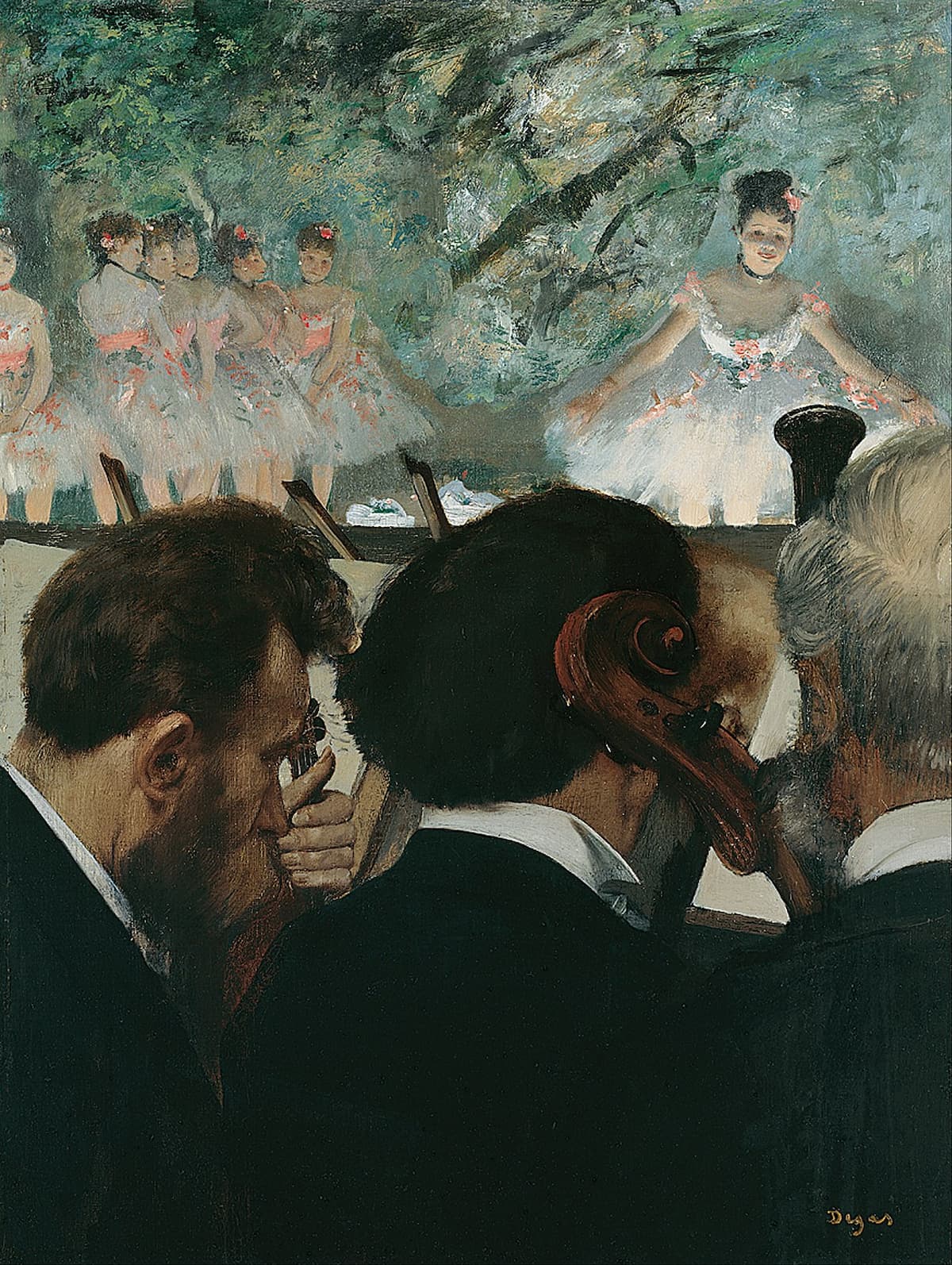
Edgar Degas: Orchestra Musicians
Degas’ first painting from the theatre were portraits, and “The Orchestra at the Opera” essentially portrayed a number of musicians seated in the orchestra pit during a performance of Meyerbeer’s Robert le Diable. We can identify his friend the composer Emmanuel Chabrier, the flautist Joseph-Henri Altès, the cellist Pillet, the first violinist Lancien, the violist Gouffé, and the bassoonist Désiré Dihau. Dihau, along with his sister Marie, herself a talented pianist, were regular guests at the musical gatherings hosted by Edgar’s father.
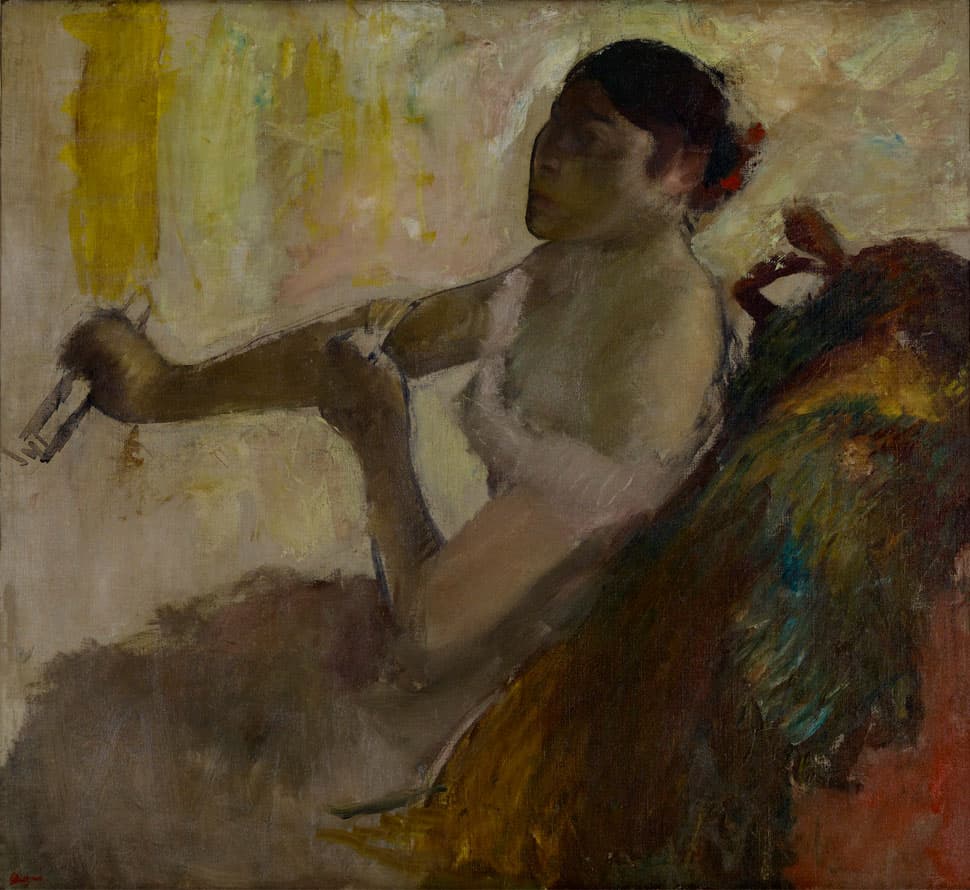
Edgar Degas: Portrait of Rose Caron
Désiré Dihau is seated in a center position, one normally occupied by one of the first violins. The orchestra is strongly framed by the sharply picked out edge of the stage and the foreground side of the orchestra pit. Other elements, such as the instruments, white shirt fronts and the chair back, add to the compositional order. The dark, dominantly black tone of the foreground figures contrasts sharply with the stage-lit dancers in the background. However, so as not to distract from the orchestra, the dancers are shown cut off at the shoulder. In comparison with the careful finished treatment of the musicians, they are much more loosely brushed to give an idea of movement and to capture the texture of their tutus.
Giacomo Meyerbeer: Robert le Diable “Ballet of the Nuns” (excerpt)
Painter of Dancing Girls
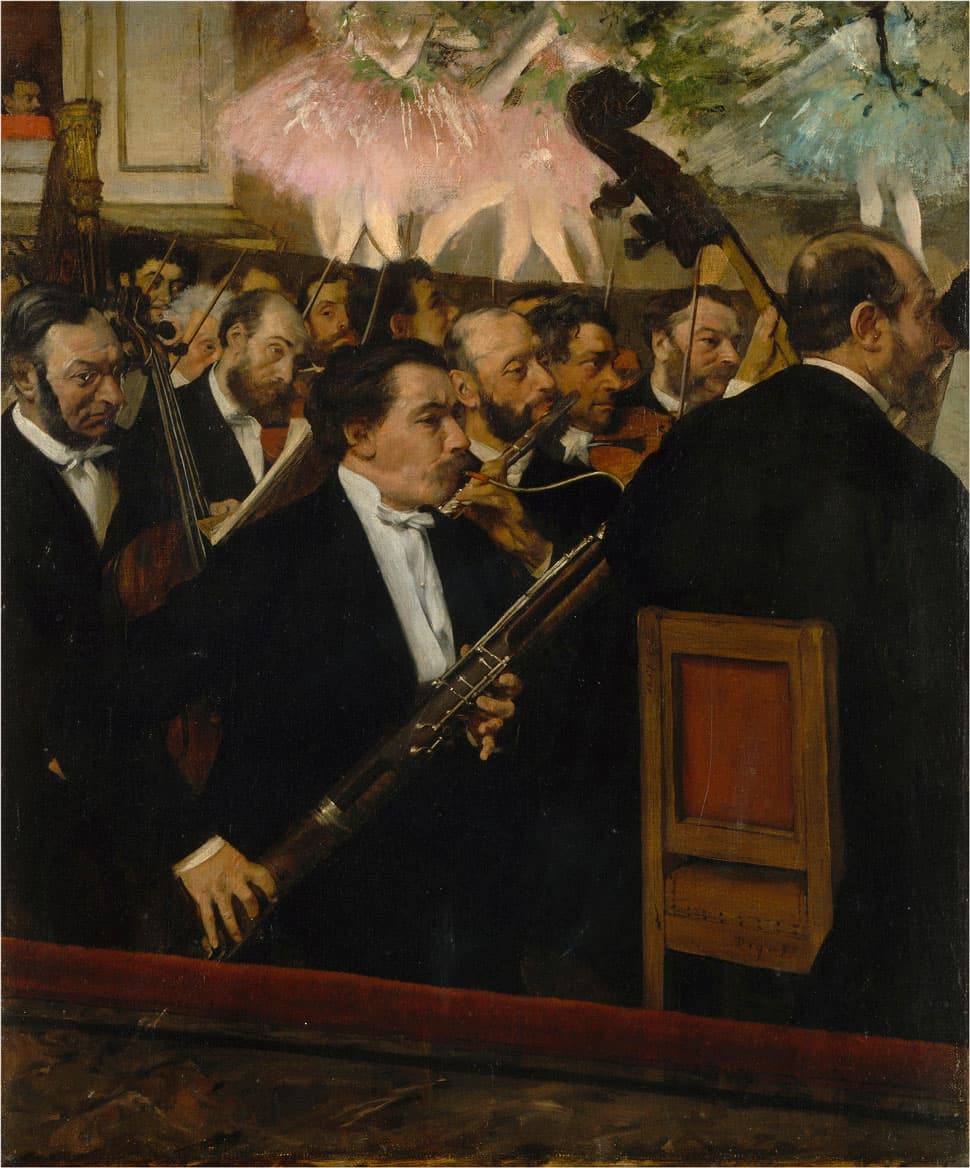
Edgar Degas: The Orchestra at the Opera
Degas is probably best remembered as the painter of ballet dancers, a subject matter that constitutes roughly half of his total output. Excited by movement and by the transformation of ordinary women into graceful stage performers, the ballet was his ideal subject. The writer, novelist and critic Edmond de Goncourt visited Degas in his studio and commented, “After many experiments, he has fallen in love with dancers.” The “Ballet Rehearsal” is one in a series of paintings of dancers which Degas began in the mid 1870s.
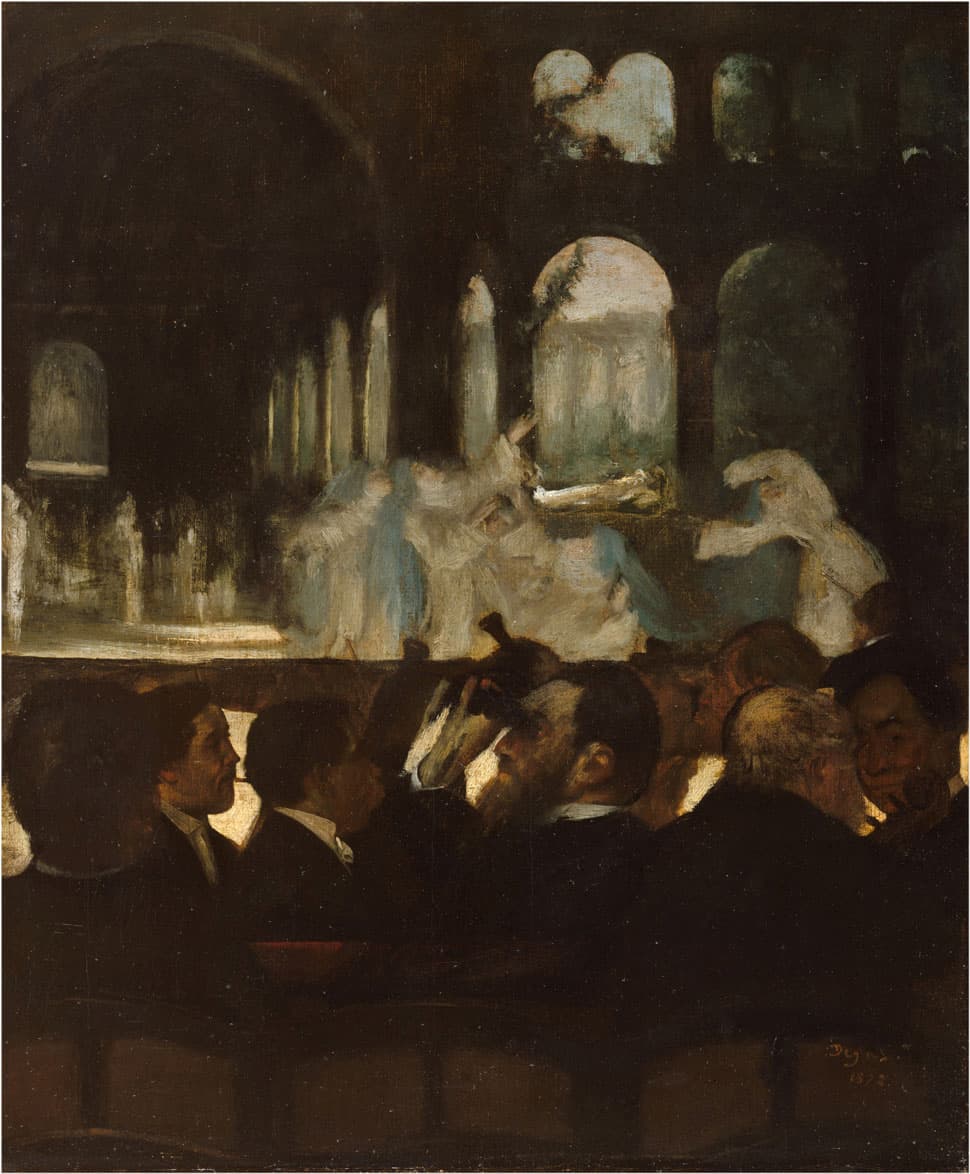
Edgar Degas: The Ballet from “Robert le Diable”
His ballet painting over the years shows a shift in viewpoint from that of a distant onlooker to that of a close-up recorder. An art critic writes, “as Degas watched the lengthy and exacting exercises of the ballerinas, he began to associate the dance training with that of the visual artist. “People call me the painter of dancing girls,” Degas told a Parisian art dealer, “but it has never occurred to them that my chief interest in dancers lies in rendering movement and painting pretty clothes.” To be sure, at the ballet Degas found a world that excited both his taste for classical beauty and his eye for modern realism.
For more of the best in classical music, sign up for our E-Newsletter


